There’s always this fear following a contract year breakout
New York Jets fans, what comes to mind when you think of former DL Muhammad Wilkerson?
Some might remember the good times. Dominant two-way interior player. 12 sacks in 2015. Lived in the backfield. Great first-round pick.
Read More Jet X Content:
Article: Sauce Gardner squashes Zach Wilson-Mike White ‘Madden’ drama
Article: How important are the LB and S positions in NY Jets’ defense?
Article: The hidden truths behind NY Jets’ 2022 run defense
However, many more will note the sour way Wilkerson’s Jets tenure ended: just two years after signing a five-year, $86 million extension in 2016, No. 96 was released. The two-time second-team All-Pro had just eight combined sacks in the two years following his extension.
Executives across all sports fear the risks associated with a contract year breakout season. Whether the one-year wonder phenomenon happens with players across all years of their contracts or is particularly associated with contract years, Murphy’s Law demonstrates that the brain tends to take note of unusual events over usual ones. Therefore, when a player signs a big contract and does not live up to it, fans and general managers take notice, making them wary of signing the next big bust.
Quinnen Williams had the classic contract-year breakout season. Prior to 2022, he had never lived up to his No. 3 draft status. Although Williams was not bad, he was simply not the impactful player the Jets thought they were getting when they drafted him that high out of Alabama. Some blamed it on the fact that he was a one-year wonder in college, making him a risky pick to begin with. Others questioned his strength or technique. Either way, 2022 was clearly a put-up-or-shut-up year for No. 95.
And boy, did Williams deliver. Although he is not a Defensive Player of the Year finalist, the primary difference between his stats and those of finalist Chris Jones of the Chiefs are the number of snaps each took; their rate stats are very similar.
Quinnen Williams vs. Chris Jones, per Pro Football Focus:
- Pressure Rate: 12.4% vs 12.4%
- Sack Rate: 3.1% vs 2.4%
- Defensive Stop Rate: 4.6% vs 3.4%
- Total Snaps: 690 (29th) vs 915 (2nd)
Overall, Williams led all interior defensive linemen in pass-rushing productivity (PRP), a PFF stat that combines sacks, hits, and hurries relative to how many times the player rushes the passer. He had 12 sacks, second among IDL, and was the Jets’ only consistent starting pass rusher. The most obvious indicator of Williams’s value was the change in the defense when he left the second Bills game with an injury; prior to that, he had two sacks and was bullying the Bills’ offensive line upfront, but once he left, the defense sprung some leaks and allowed 20 total points, enough for Buffalo to win.
Furthermore, Quinnen is very underrated in his run game impact. There are very few statistics that can truly measure a player’s run game impact, since stopping the run is about so much more than making tackles or even tackles for loss or defensive stops. Williams is double-teamed at a very high rate, yet he holds his own and does not cede leverage. Sure, Williams makes plenty of tackles in the backfield and impressive plays against the run, but his true impact was far greater than his box score or even advanced stats. (For an explanation of why run-stop win rate is an unreliable metric, note that Nathan Shepherd was ranked second-best among DT while yielding putrid results in run defense.)
Considering how dominant Quinnen was in 2022, it should be a no-brainer to sign him to an extension. Williams has already said he will hold out of OTAs if an agreement is not reached before then. He is set to make $11.5 million in 2023 on the fifth-year option but wants long-term job security before he puts his body on the line.
The man deserves to get paid, and he will be looking for a deal that makes him the second-highest-paid DT in the league, behind possibly the greatest defensive player of all time in Aaron Donald. As Michael Nania detailed, such an extension would probably be in the range of $25 million per year with at least $60 million guaranteed.
Still, considering that the contract year was Williams’s breakout season, there’s always going to be some concern. Laken Tomlinson showed Jets fans that a player can very well fall off a cliff after he gets paid. Is there a reason to be worried that Williams turns back into a good-but-unremarkable player in 2023?
Career trajectory
In a preseason article about expectations for a breakout 2022 season from Quinnen Williams, Stefan Stelling of Jet X explained that Williams’s career trajectory was similar to that of Fletcher Cox, the Eagles’ still-impressive defensive tackle. Here was the graphic he posted comparing their measurables and careers to that point.
Although we at Jet X have stopped using PFF grades as a basis for comparison for various reasons, I’ll include it here for the sake of continuity: 90.1 PFF grade, 32 D stops, 12 sacks. A more amazing stat was that Williams accomplished this in 289 fewer total snaps than Cox—87 fewer on run defense and 201 in pass rush (with one coverage snap for Cox).
Considering this comparison, there is a reason for optimism that Williams will continue his performance and that his dominance was not just a fluke. Fletcher Cox is a potential Hall of Famer, so to expect that level of consistency may be a reach. But to think that Quinnen can play out a four-year contract at a level that is mostly if not fully deserving of $25 million per year is not unrealistic.
Hard worker
Unlike Muhammad Wilkerson, who garnered whispers about his work ethic, weight, and character prior to his contract extension with the Jets, Quinnen is one of the emotional leaders of the team. There has been zero indication that Williams is anything but a hard-working, high-character player who cares 100% about the team.
Williams’s shouting match with defensive line coach Aaron Whitecotton during the Week 3 loss to the Bengals only highlighted this fact: he was furious about the blitz-happy approach that was not working against Joe Burrow because he had the confidence that he and the other Jets’ linemen could get home.
Quinnen’s reaction when he learned that he was a first-team All-Pro further highlighted his high character.
Quinnen Williams’ reaction to becoming an AP NFL All-Pro first-teamer?
“That’s dope bro, for sure!”
Here’s the moment @robmaaddi informed Williams he’d been selected: pic.twitter.com/akpmaEMchf
— AP NFL (@AP_NFL) January 13, 2023
After laughing with delight and exclaiming, “That’s dope!”, Williams explained that he tells his wife his goals every day to keep him accountable and make sure he does the right thing each and every day. That’s what hard work is all about, and that rarely disappears suddenly when a player gets paid.
Quinnen came into the league at 303 pounds and plays at about 295. He has never shown up out of shape and went out of his way to prove defensive coordinator Jeff Ulbrich wrong when the coach mistakenly cast some aspersions on his conditioning.
If the Jets would only play him the number of snaps on par with other defensive linemen of his caliber, Quinnen likely would have been a Defensive Player of the Year finalist. That’s not his problem, but maybe Robert Saleh wants to consider putting the team MVP on the field to the greatest extent possible.
Youth
It’s hard to remember this because Quinnen has already played for four years, but he is just 25 years old and will not turn 26 until December. Sure, that means he has more tread on his tires than some other 25-year-old NFL players (Micheal Clemons and Stetson Bennett are older than him!), but it also means that he was not at his peak physical maturity when he entered the league.
The fact that he was a one-year starter in college further highlights that he needed some time to build his power, which was a big basis for his 2022 breakout: instead of sitting back and waiting for the battle, Quinnen attacked offensive linemen with his raw power and got the better of them. He also improved with his hands and technique, but his physical strength certainly helped a lot.
Improved surrounding weapons
Although the Jets’ edge rush was somewhat spotty in 2022, it was still better than what Quinnen had ever played with before. John Franklin-Myers, Carl Lawson, Jermaine Johnson, Micheal Clemons, and Bryce Huff will beat the likes of Shaq Lawson and Ronald Blair. Additionally, with the strong season Sheldon Rankins put forth after a disappointing first year with the Jets, the pressure was not all on Quinnen to do it all himself.
Still, Williams was by far the Jets’ most consistent and efficient pass rusher, at least among those who received a significant snap share. His 12.4% pressure rate was sixth among interior defensive linemen; Carl Lawson‘s 11.3% rate was barely above the 10.8% league average for edge rushers, while Jermaine Johnson and Micheal Clemons both ranked in the 90s out of 108 qualified EDGEs. The only truly dominant Jets edge was Bryce Huff, who led the league in pressure rate at an astounding 20.8%.
Lawson is almost certainly going to be a cap casualty due to the Jets’ rather narrow cap situation for next season. The team can save $15.4 million by cutting him. Although it might be nice to bring in another starting edge rusher, it makes the most sense for the Jets financially to keep JFM starting at one edge and allowing Johnson, Clemons, and Huff to rotate on the other side. Even if Johnson and Clemons do not develop as edge rushers the way the Jets hope they will, increasing Huff’s snaps will automatically pull some pressure off Quinnen, especially if the team also re-signs Rankins.
The general talent of the Jets’ defensive line is another reason to believe that Quinnen can continue to play at a high level.
Jets: Decision time
Quinnen Williams is a strong bet to be a valuable Jets player going forward. Sure, there’s his injury history, which has caused him to miss a few games over his career. Yes, it was a breakout contract year. Still, ultimately, the signs are all pointing toward only one conclusion:
Sign the man. Don’t drag it out. Get your team MVP back in the building.

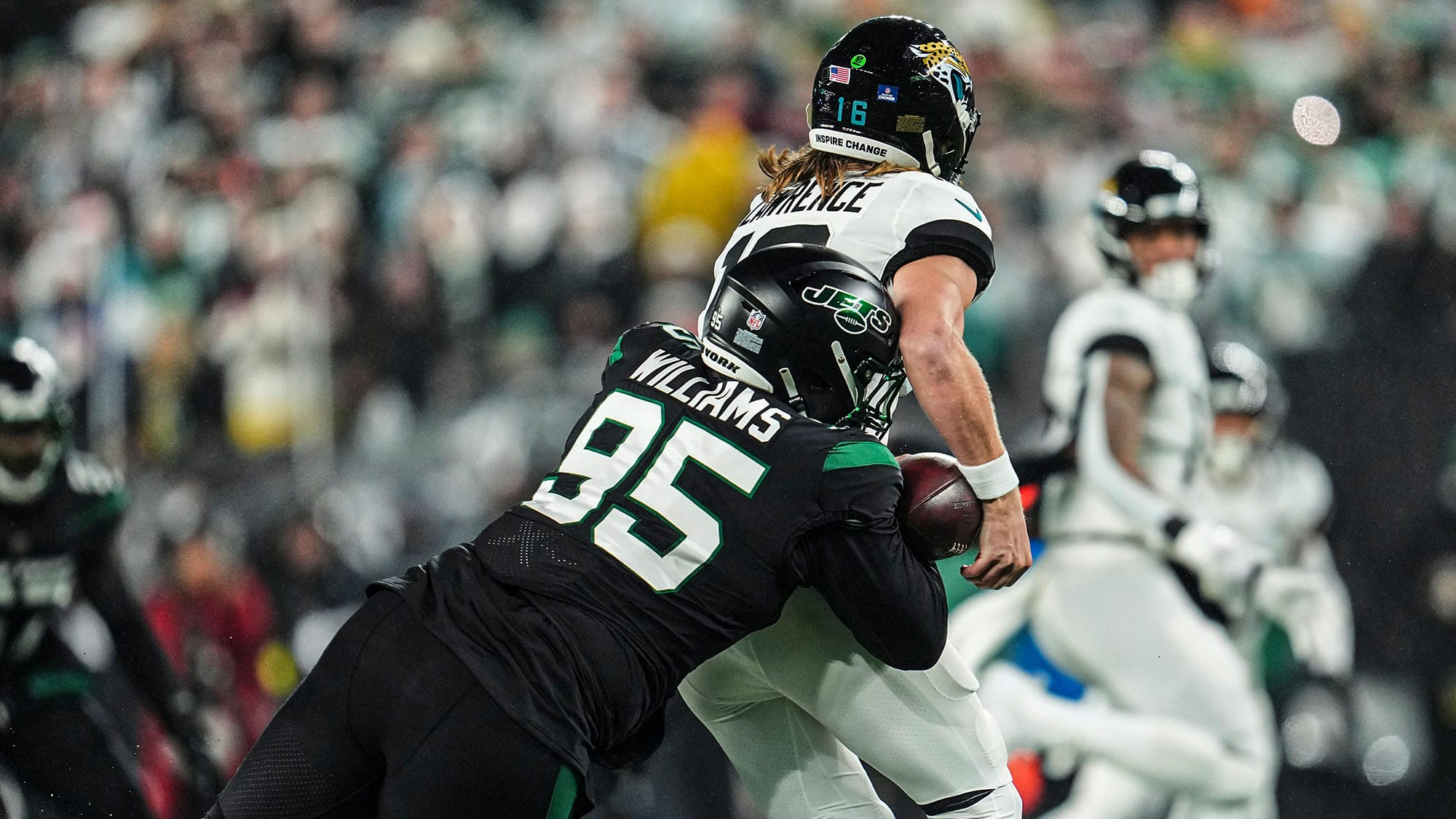
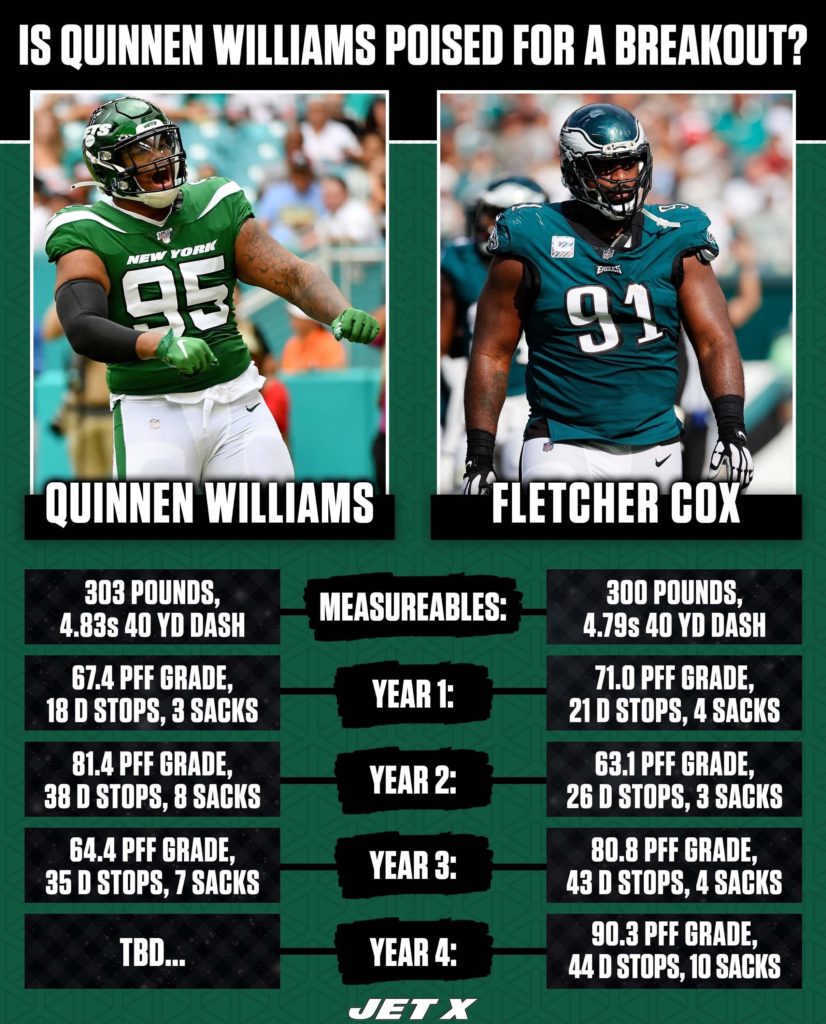



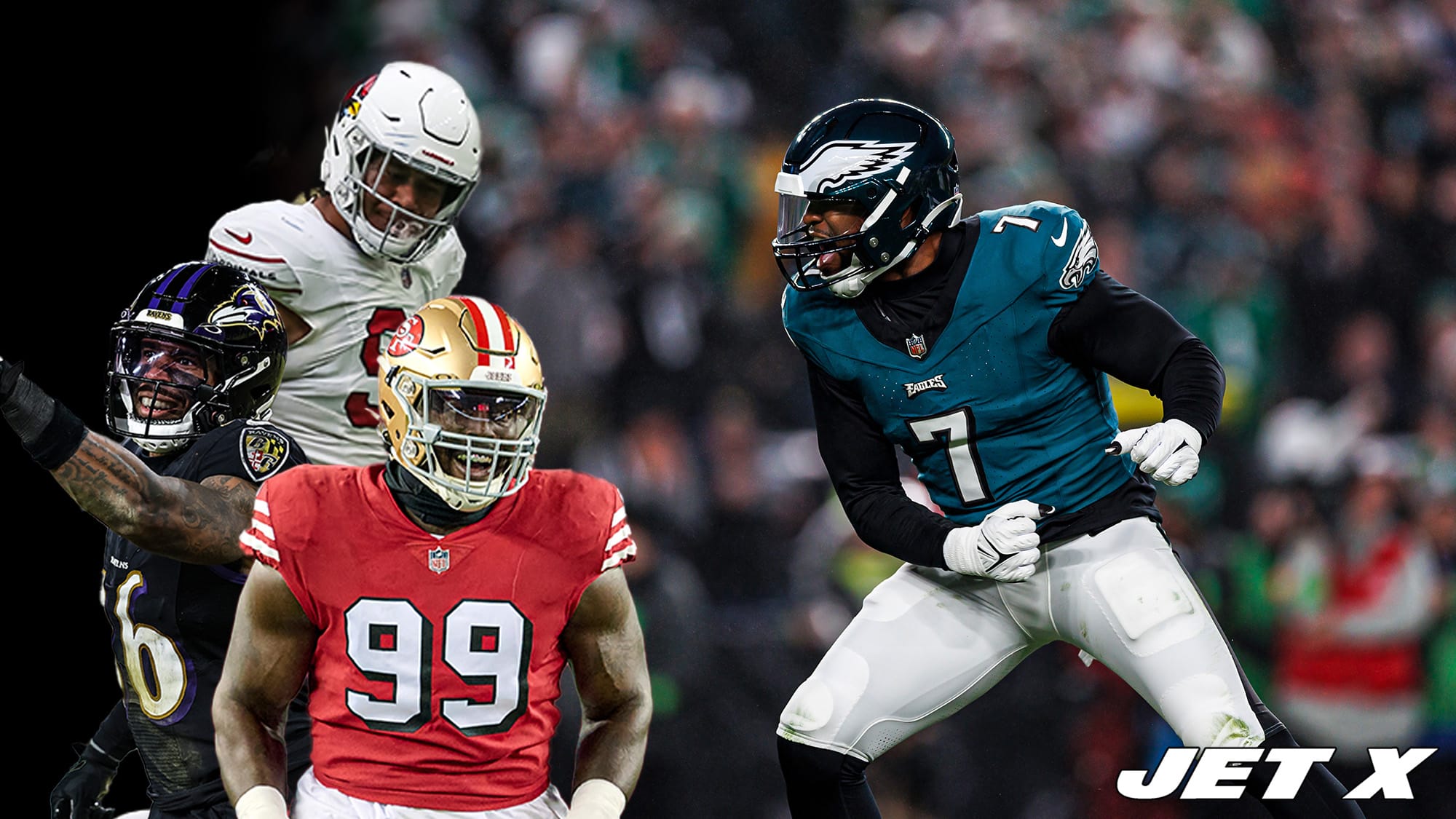




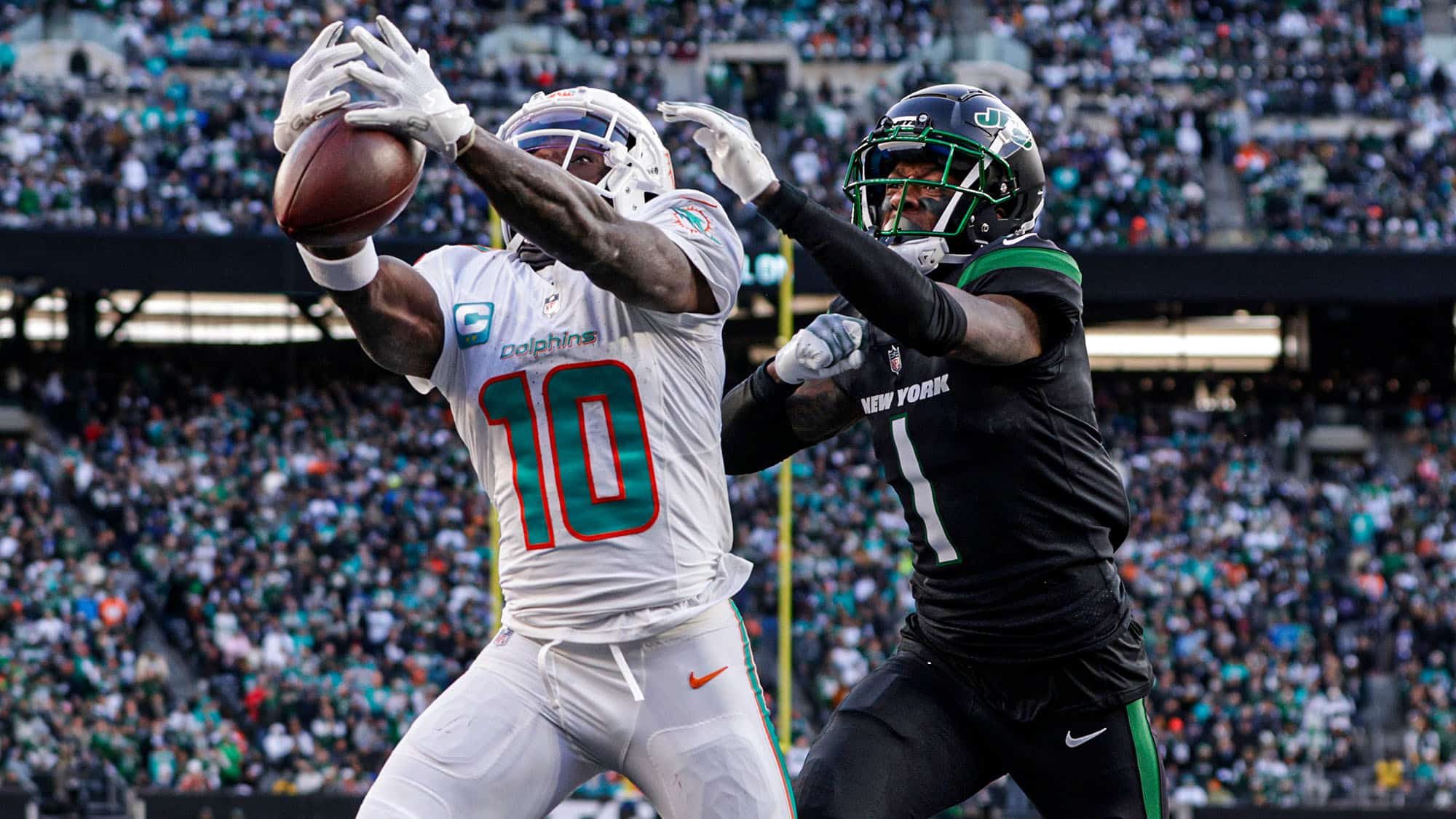
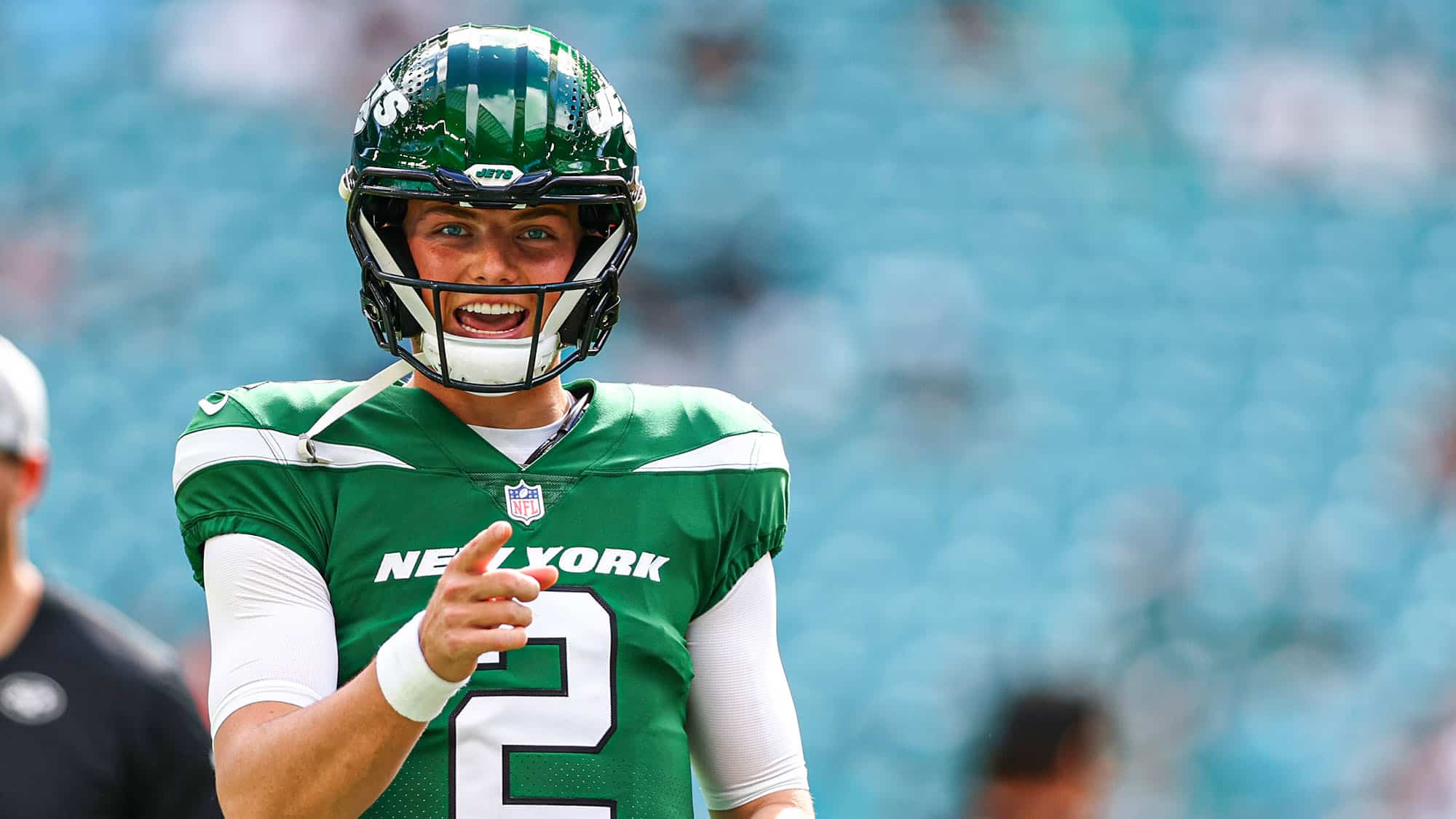
The Jets must absolutely pay Q and keep him here long-term. Look at what our defense was w/o while he was injured. He should get Buckner, and Leonard Williams money.
One can always point to injury concerns in this game, but an interior lineman doesn’t pose the risk that other positions might.
Also, signing Q sends the right message to the team, hard work and success brings rewards and appreciation.
The clip you provided of his reaction to being named All-Pro is all you need to know about the man. I use the word “simple” not in a derogatory manner, but Q keeps his life and motivations simple. If you watched One Jets Drive you’ve seen that he leaves much of daily life’s concerns to his wife; God bless her! I don’t see Q getting a big head or being lazy. The recognition he received this year will be more motivation than a reason for complacency.
As I’ve said elsewhere, I’d like to see us get away from the Wide 9 scheme, at least on early downs. A tighter positioning of our DE’s would be an enormous help to our interior linemen in run-stopping.
I agree 100%. I watched every Jets game this year. Quinnen was a major disruptor all season long. He not only made plays, you could see teams were adjusting to try to minimize Quinnen’s impact on the game. This allowed other players an opportunity to succeed. And the adjustments still didn’t prevent Quinnen from wrecking the game.
Let’s be candid here: Quinnen is the biggest defensive disruptor the Jets have had since the great Joe Klecko. It would send a terrible message to the team if a player could have a season like Quinnen and not get signed to a long term contract. Much like Lawrence Taylor with the Giants, Quinnen can be the man the Jets build an entire defense around.
Exactly. When Daryl Johnston said on the FOX broadcast that the Jets didn’t have that elite finisher on the defense, Joe Davis corrected him, because Quinnen Williams is that guy for them. It’s a no-brainer to re-sign him.
If the Jets aren’t going to change their defensive approach (i.e., snap count) they are better off trading him to a team that will play and pay him.
By the end of the year, he was playing around 70% of the snaps in many of the games. That’s enough to make it worth paying him.
Didn’t know that and I agree my point is void in that case. But if he wants Aaron Donald money, I’d like to see some facts about high-priced DL and injury likelihood (case in point JJ Watt). I’m down at just over 20 million per year, especially when the Jets essentially control his rights next year. I do agree he and his agents probably won’t accept and are aiming higher. Might be a no-brainer for some (most), but I think differently about how the Jets should manage top players and the salary cap. Almost Patriot like. Darn, I hate mentioning them.
He’s going to want money that’s lower than Donald’s (because asking to be paid the same amount as the universally-acknowledged best defensive lineman in football based on one year that did not quite match peak Donald would be foolish) but higher than anyone else’s, including Chris Jones and DeForest Buckner. Both of them are in the $20-21 million per year range, but they signed a couple of years back. Chances are Quinnen will want to beat them by a significant margin, which is why $25 million per year sounds about right.
I am also not inclined to give huge contracts, but the problem is that when your system is so heavily dependent on elite players as the Jets’ is, you can’t afford to jettison your top talent and assume that you’ll be able to replace them without skipping a beat. That’s the true genius of Bill Belichick on the defensive side of the ball.
Understood, and thanks for the thought-provoking article and comments. I’ll be real interested in seeing future articles on how best to manage our internal (and proposed external) talent and the resultant cap space.
Yes, the cap space is going to be an issue, but with Quinnen, it’s a future-Joe-Douglas problem. He’ll cost $11.5 million against the cap on the fifth-year option next year. It’s 2024 and beyond when the extension would kick in.